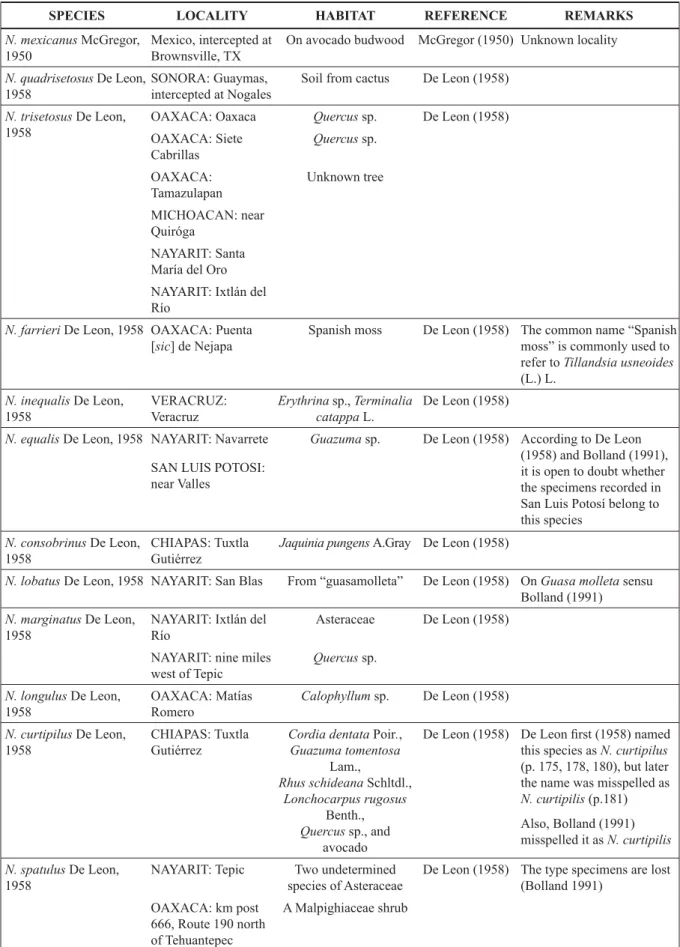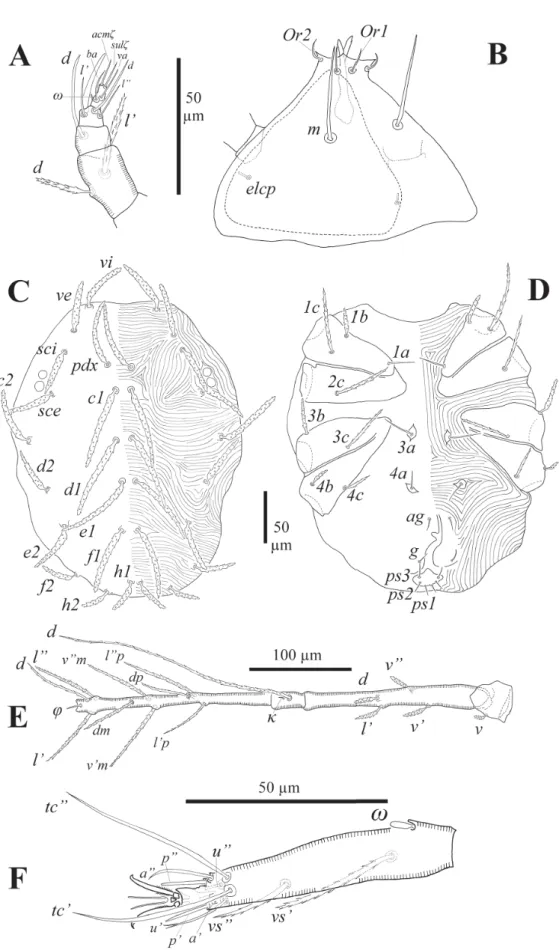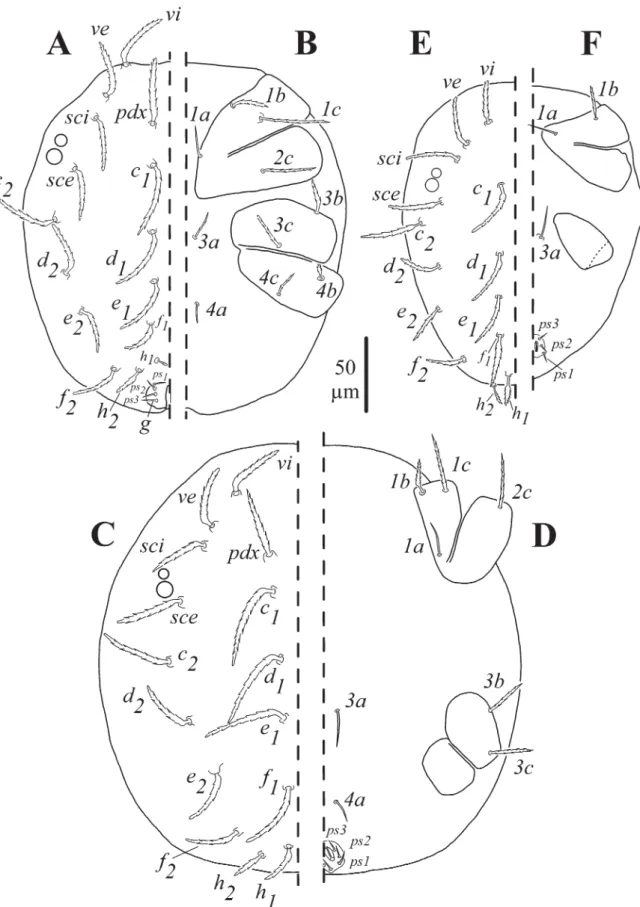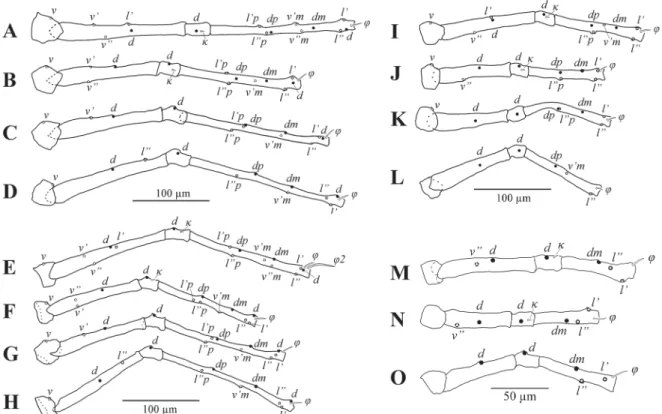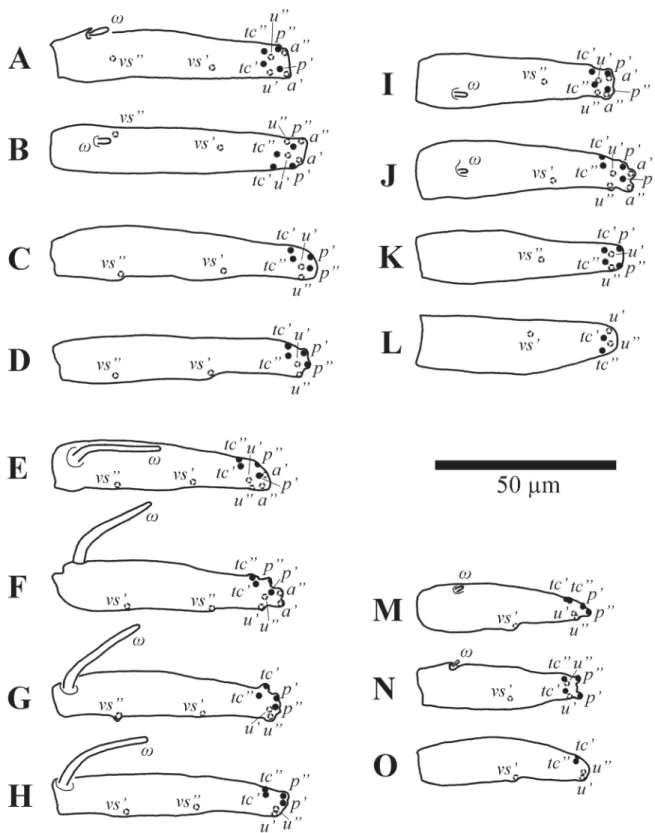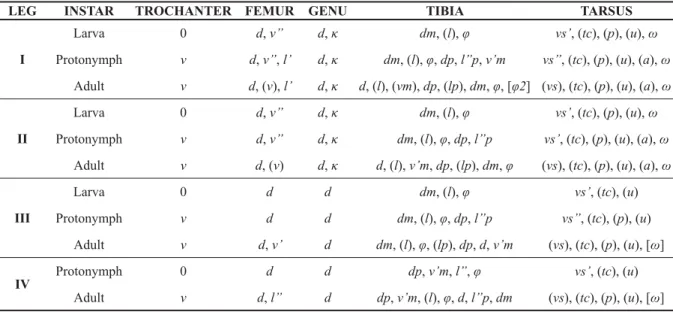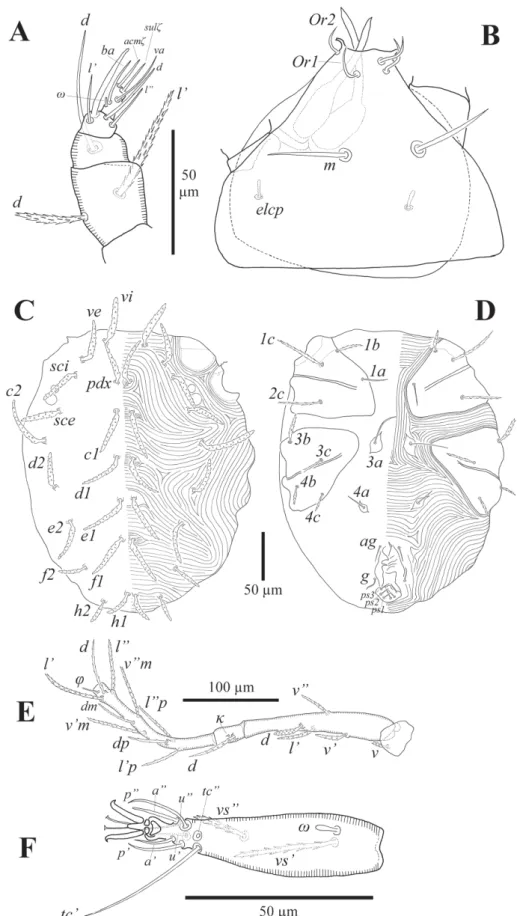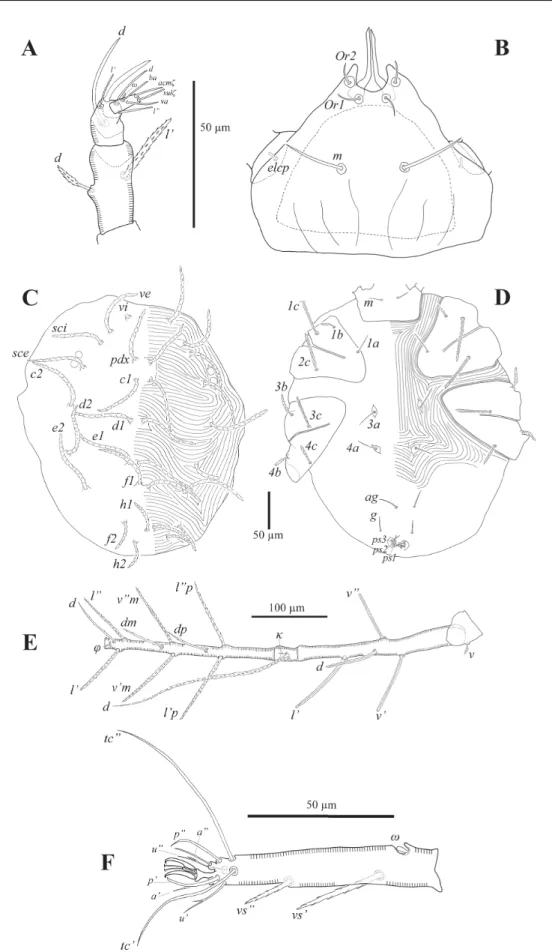http://dx.doi.org/10.5852/ejt.2016.202 www.europeanjournaloftaxonomy.eu 2016 · Paredes-León R. et al.
This work is licensed under a Creative Commons Attribution 3.0 License.
R e s e a r c h a r t i c l e
urn:lsid:zoobank.org:pub:55CBC031-F369-48A2-BE0E-2249AB7A43D1
Camerobiid mites (Acariformes: Raphignathina: Camerobiidae) inhabiting epiphytic bromeliads and soil litter of tropical dry forest
with analysis of setal homology in the genus Neophyllobius
Ricardo PAREDES-LEÓN
1,*, Angélica María CORONA-LÓPEZ
2, Alejandro FLORES-PALACIOS
3& Víctor Hugo TOLEDO-HERNÁNDEZ
41, 2, 3, 4
Centro de Investigación en Biodiversidad y Conservación (CIByC), Universidad Autónoma del
Estado de Morelos, Avenida Universidad 1001, Col. Chamilpa, C.P. 62209, Cuernavaca, Morelos, México.
*
Corresponding author: ricardo.paredes@uaem.mx
2
Email: acorona@uaem.mx
3
Email: alejandro.fl orez@uaem.mx
4
Email: victor.toledo@uaem.mx
1
urn:lsid:zoobank.org:author:3A3A9078-178C-41AD-8520-B2E72BDFC21C
2
urn:lsid:zoobank.org:author:D9D501D6-5883-4C9A-877D-5567149BC542
3
urn:lsid:zoobank.org:author:DF49E2C9-D57A-4AF9-92AB-AD3C828A97D1
4
